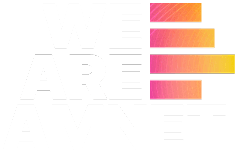Introduction
As we look ahead to 2025, the insurance industry is facing a wave of transformations driven by technology, data, and changing consumer expectations. What’s exciting is how these changes are not just futuristic ideas but tangible trends reshaping how insurers operate and engage with customers today. So, let’s dive into some key trends that are set to redefine the landscape.
AI and Automation: More Than Just Buzzwords
We’ve all heard about AI and automation being used in many industries, but in insurance, it’s becoming more of a necessity than an option. Insurers are using AI to streamline claims processing and improve customer service. For example, AI bots can now assess and process claims in just seconds, leading to faster settlements and a more efficient process. One standout case is Lemonade’s AI-powered bot, which manages claims almost instantly. By automating these back-end processes, insurers can focus on delivering a better customer experience.
But it’s not just about speed; AI also helps in fraud detection by analyzing patterns that human eyes might miss. This means fewer false claims, saving both time and money. For an industry where every second and penny counts, automation and AI are real game changers.
Personalization Through Data: Meeting Customers Where They Are
With the increasing demand for tailored experiences, marketing teams are discovering the potential of data from connected devices, like wearables and smart home sensors, to drive targeted content and personalized customer journeys. Insurers leveraging this data can create more dynamic, segmented marketing campaigns, from email strategies to app notifications that reflect individual user behaviors and preferences. Usage-based insurance (UBI), for instance, showcases how real-time data enables marketers to position premiums and incentives based on lifestyle choices, making messages far more relevant and engaging.
For content creators, the explosion of connected data—projected to reach nearly 56 billion devices by 2025—opens up immense possibilities. Real-time customer insights allow marketing teams to tailor narratives and experiences that are not only personalized but timely and contextually relevant. Campaigns can evolve dynamically, adapting to customer behavior shifts and allowing for a responsive, data-driven approach to messaging.
By capitalizing on personalization trends, marketing professionals can engage audiences with content that truly resonates, fostering stronger connections and loyalty.
Embedded Insurance: Seamless and Convenient
Have you ever bought an item online and been offered insurance at the point of sale? That’s embedded insurance, and it’s growing fast. This trend allows non-insurance platforms, like e-commerce or gig economy apps, to offer insurance seamlessly as part of the buying experience. By 2025, we can expect this to become a standard feature, with insurers partnering with various platforms to offer everything from travel insurance to home warranties at the click of a button.
What makes embedded insurance appealing is its convenience. It removes friction from the process by integrating insurance into moments where customers need it most. No separate forms or policies—just instant coverage, making the entire process easier and more intuitive.
Sustainability and Climate Resilience: More Than Just Greenwashing
Sustainability is no longer a niche concern in insurance; it’s becoming central to many companies’ strategies. Consumers, especially younger ones, are increasingly looking for insurers that can help them mitigate environmental risks. Whether it’s offering lower premiums for electric vehicles or creating products that help clients prepare for climate disasters, insurers are finding ways to align with the growing demand for sustainable solutions.
In fact, by 2025, many insurers will shift their focus from simply compensating for damage to actively preventing it. This “promise to help” mindset, rather than a “promise to pay,” will reshape the industry. From health insurance encouraging proactive wellness to property insurers helping clients adopt preventive measures against natural disasters, this trend is about building a more resilient future.
Customer-Centric Models: Shifting the Focus from Products to People
The days of one-size-fits-all insurance are coming to an end. Customers now expect more from their insurers—beyond just risk transfer, they want holistic solutions that address their broader health, financial, and lifestyle needs. This shift is pushing insurers to focus more on the customer journey and less on the product itself.
For example, insurers are using AI and predictive analytics to offer more tailored solutions that fit seamlessly into customers’ lives. Whether it’s helping customers manage their wellness through real-time health data or offering dynamic auto insurance that rewards safe driving, the focus is now on making insurance a more integrated part of everyday life.
The Bottom Line
By 2025, the insurance industry will be fundamentally different from what we know today. The trends outlined above—AI and automation, data-driven personalization, embedded insurance, sustainability, and customer-centric models—are not just changes in technology but shifts in mindset. Insurers will need to rethink how they engage with customers, provide value, and remain competitive in an evolving digital landscape.
The exciting part? These trends are already in motion, and companies that embrace them early will lead the way into the future of insurance.
References:
Accenture: https://insuranceblog.accenture.com/wp-content/uploads/2021/04/Insurance-Revenue-Landscape-2025-Innovate-for-Resilience.pdf
WNS: https://www.wns.com/perspectives/articles/articledetail/595/top-5-trends-in-the-insurance-industry
PWC: https://www.pwc.com/gx/en/financial-services/fs-2025/pwc-insurance2025.pdf
Deloitte: https://www2.deloitte.com/us/en/insights/industry/financial-services/financial-services-industry-outlooks/insurance-industry-outlook.html






